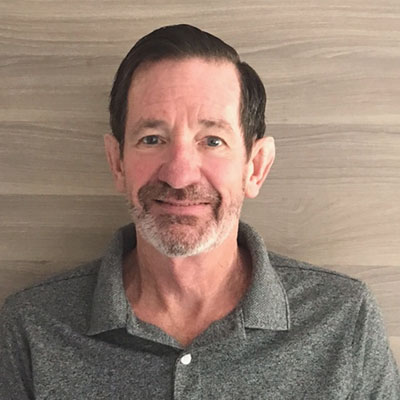2023 Conference
Agenda
Day(s)
:
Hour(s)
:
Minute(s)
:
Second(s)
Conference Schedule
Pipeline Simulation Short Course
Monday
May
15
Introductions
7:30 a.m.- 8:00 a.m.
PSSC I – Fluid Properties
8:00 a.m. – 10:30 a.m.

Jon Barley (Emerson)
PSSC II – Pipeline Flow Equations
10:30 a.m. – 11:45 a.m.

Jason Modisette (Atmos International)
Lunch
11:45 a.m. – 12:45 p.m.
PSSC II – Pipeline Flow Equations
12:45 p.m. – 14:00 p.m.

Jason Modisette (Atmos International)
PSSC III – Multiphase Flow in Pipelines
14:00 p.m. – 16:30 p.m.

Ivor Ellul (CiSK Ventures)
Tuesday
May
16
PSSC IV – Real Time Systems & Leak Detection
8:00 a.m. – 10:30 a.m.

Ed Nicholas (Nicholas Simulation Services)
PSSC V – Pipeline Operations & Planning
10:30 a.m. – 11:45 a.m.

Jonathan Fasullo (TC Energy)

Melissa Debevc (Enbridge)

Rick Brown (RCB Consulting)
Lunch
11:45 a.m. – 12:45 pm
PSSC V – Pipeline Operations & Planning
12:45 p.m. – 14:00 p.m.

Jonathan Fasullo (TC Energy)

Melissa Debevc (Enbridge)

Rick Brown (RCB Consulting)
PSSC VI – Compressor Station Modeling
14:00 p.m. – 16:30 p.m.

Cody Allen (Solar Turbines)
Ice Breaker & Registration Opens
18:00 p.m. – 19:30 p.m.
Wednesday
May
17
8:00 – 8:40 |
PSIG 2301– Estimating Vapor Cavity Collapse Pressure Surges in a Crude Oil Delivery TerminalGuohua Li, Michelle Moyer, Hamid Bidmus (DNV) This paper provides charts and tables for the vapor cavity volume and surge pressure initiated due to vapor cavity collapse in crude oil delivery terminals. The vapor cavity for each case is created via a parametric and transient study on eight parameters using the discrete vapor cavity model. The charts and tables obtained can be used to estimate the maximum surge pressures, rank the effect of the eight parameters on transient pressures, assess mitigation strategies for individual parameters, and to optimize general terminal delivery operations. |
||
8:40 – 9:20 |
PSIG 2302 – Transient Surge Pressure Impacted by Check Valve Closing Time Simulation Methods in Parallel Piping in an Oil TerminalFardin Hakimreza, Ryan Shindruk (Enbridge) This paper presents transient surge pressure results of an initiating oil terminal with sets of parallel check valves (booster manifold and meter manifold) by applying four check valve closing time simulation methodologies. Transient surge pressures of a system with check valves installed in parallel is dependent on the simulation set up of the check valve closing times. To get more realistic transient surge results, dynamic closing time of the check valves will be introduced. In this methodology, the closing time of the check valves will be updated every time that the reverse flow velocity drops below critical velocity. The impact of this methodology is even more important when the system is dealing with 2nd or 3rd transient waves approaching the check valves in parallel. A demonstration of the simulation with dynamic closing time of check valves will also be shown. |
||
9:20 – 10:00 |
PSIG 2303 – A Laplace Transform Method for Solving for Batch Interfacial Volumes
Brett Christie (Plains Midstream) This paper discusses a new procedure for determining the amount of product mixing that occurs in batched liquid phase pipelines. The mathematical approach is based on a purely analytical solution to the batch diffusion differential equation using the Laplace transform. A parameter estimation technique is then presented that determines the diffusion coefficient based on actual pipeline densitometer readings for both the batch leading and trailing edges of a variety of product types. |
||
10:00 – 10:15 |
Break |
||
10:15 – 10:55 |
PSIG 2304 – Leak Detection Systems for Short Liquid PipelinesVishrut Garg, Junxiao Wu, George Harriott, Ed O’Reilly, Matthew Keim (Air Products and Chemicals, Inc.) |
||
10:55 – 11:35 |
PSIG 2305 – Pipeline Operating Cost DRA Optimization Investigations, Single Product and Batched OperationsBill Ma (Phillips 66) This paper discusses the use of DRA application techniques to run both single product and multi-product batched pipelines in the most economical operation mode. DRA performance degradation mechanism is critical while pump efficiency and constraints are utilized as the secondary factors for operational cost optimization calculations and concerns. Two single product pipeline DRA optimization approaches, parametric simulation analyses and mathematical optimization solvers, are more mature and well performed in the real operations. The challengeable investigation is more focusing on the multi-product batched pipeline transition optimization initiatives and sensitivity tests to develop a general strategy for batched operation optimization. |
||
11:35 – 12:15 |
PSIG 2406 – A Stochastic Approach to Slack Line Flow in Online ModelsNorense Okungbowa (Enbridge), Trent Brown (evoleap) In liquid pipelines with significant elevation changes, the presence of slack line flow can be a significant operational problem. Through an uncertainty analysis, it is shown that it is difficult for an online model to predict slack flow accurately, particularly if the pipeline is batched and/or utilizes DRA. Instead of a deterministic model, a statistical approach is developed and implemented, and illustrated with examples from operating pipelines. |
||
12:15 – 13:45 |
Lunch |
||
13:45 – 15:15 |
Technology Showcase H1 |
||
15:15 – 15:30 |
Break |
||
15:30 – 17:00 |
Technology Showcase H2 |
||
8:00 – 8:40 |
PSIG 2307 – Adapting Pipeline Specific Computational Applications to Manage Increasing Hydrogen ContentPaul Dickerson (Emerson) This paper and accompanying presentation reviews the current energy transition trends in the pipeline simulation space. Focusing on practical application, the author examines some of the proposed general solutions applied to real world problems and recognizes some potential recommended practices and some of the technological restrictions. |
||
8:40 – 9:20 |
PSIG 2308 – Reduction of CO2 Emissions During Operation of Oil and Gas PipelinesGalen Stanley, Alexander Chamorro (Aveva) There are many pipelines around the world that move petroleum products from where they were generated to where they are needed. It requires a large amount of energy to move the product through the pipelines. The transportation creates a significant amount of CO2 emissions each year. This paper outlines a tool for transportation companies that will allow pipeline operators to reduce that amount while still maintaining delivery schedules. It describes the potential savings that can be achieved by optimal configuration of the pumps/compressors, DRA injections etc. It will present the information in a simple interface to allow the operators to make wise choices on how to operate the pipeline. |
||
9:20 – 10:00 |
PSIG 2309 – Integrating Greenhouse Gas and Emission Calculations into Hydraulic Pipeline Simulation for Natural Gas PipelinesAlisa Bullard (NMGCO), Samon Kashani, James Gregg (Gregg Engineering) Emission fees and carbon taxes will almost certainly make up an increasing share of pipeline operating costs in the near future, and it is important for pipeline companies to account for these costs when making decisions on how to operate, maintain, or expand existing pipelines or build new ones. This paper examines the advantages and use cases of integrating greenhouse gas and emission calculations with hydraulic simulation. The presentation will demonstrate a method of making standard hydraulic simulation runs while also automatically forecasting pollutant emissions, greenhouse gas emissions, and potential carbon taxes, in order to compare the overall impact of varying future carbon tax rates. |
||
10:00 – 10:15 |
Break |
||
10:15 – 10:55 |
PSIG 2310 – Real Time Systems for Modelling Hydrogen PipelinesGarry Hanmer (Atmos International) This paper discusses the use of real time systems for modelling hydrogen pipelines and how pipeline simulation can be used to mitigate risks such as hydrogen embrittlement. The presentation provides a case study for an operational hydrogen pipeline and analyses a selection of equations of state to determine which is best suited for modelling hydrogen. A brief discussion on DOT requirements for the transportation of hydrogen will also be provided. |
||
10:55 – 11:35 |
PSIG 2311 – Simulation of Anthropogenic Carbon Dioxide Transportation in PipelinesJon Barley (Emerson) This paper discusses the fluid properties of pure CO2 and contrasts those with the properties from a range of anthropogenic CO2 mixtures. The experience drawn from analysis of the fluid properties is used to develop a simulation model of a full gas/dense phase CO2 pipeline system comprising both a gaseous and dense phase onshore gathering system and a dense phase offshore sequestration system. |
||
11:35 – 12:15 |
PSIG 2312 – Effects of Hydrogen Blending on Natural Gas Pipeline Transients, Capacity, and EconomicsAnatoly Zlotnik, Saif Kazi, Kaarthik Sundar, Vitaliy Gyrya (Los Alamos National Laboratory), Luke Baker (Arizona State University), Mo Sodwatana (Stanford University), Yan Brodskyi (Humboldt University – Berlin) When blending hydrogen into natural gas pipelines, the much lighter yet more energy-dense gas may be injected in time-varying quantities at multiple locations throughout a pipeline system that delivers flows to consumers who also have highly time-varying consumption. The physical and chemical differences between the two gases significantly affect pipeline flow transients, energy capacity, and economics. Gas composition must be tracked in order to accurately model flow physics, to account for the form in which energy is actually delivered, and to quantify effects on pipeline efficiency. We review the results of recent studies to extend steady-state and transient pipeline flow modeling, simulation, optimization, and control methods developed for homogeneous processed natural gas to the setting of heterogeneous gases. |
||
12:15 – 13:45 |
Lunch |
||
13:45 – 15:15 |
Technology Showcase H1 |
||
15:15 – 15:30 |
Break |
||
15:30 – 17:00 |
Technology Showcase H2 |
||
Thursday
May
18
8:00 – 8:25 |
Keynote The Hydrogen Blending Experience – Lessons Learned from being an Early AdopterScott Dodd (Enbridge) |
||
8:25- 9:05 |
PSIG 2313 – Compensation of Flow Imbalances Through Machine-Learned ParametersBenjamin A. Huntington, Jon Barley (Emerson) This paper demonstrates a methodology for computing the line pack in a pipeline when thermal configuration parameters are unavailable. This methodology uses machine learned parameters to adjust the thermal energy balance to help determine the impact of temperature changes on the packing. Results from simulation and from field data will be presented. |
||
9:05 – 9:45 |
PSIG 2314 – Control of Line Pack in a Natural Gas System: Balancing of Limited Resources under UncertaintyCriston Hyett, Michael Chertkov (University of Arizona), Jean Alisse, Lilach Sabban (NOGA – Israel System Operator) We perform numerical experiments to resolve the unique challenges of a natural gas system controlled via specifying flow at the inlets, with uncertain demands due to significant renewable penetration of the energy budget. Additionally, the network is studied in off-nominal, stressing scenarios. We take as an example the Israeli natural gas system. We will discuss and demonstrate the model and simulation, implemented in Julia, and analyze results in search of guarantees of robustness. |
||
9:45 – 10:00 |
Break |
||
10:00 – 10:40 |
PSIG 2315 – Tutorial on Manual Tuning of Pipeline ModelsJason Modisette (Atmos International) This is a tutorial on tuning a pipeline simulator so it reproduces the behavior of an existing pipeline. The lecture will cover best practices for adjusting unknown quantities such as pipe roughness and ground thermal properties. It will also discuss how to identify things you think you know about the pipeline which are wrong, such as inaccurate meters. Manual tuning of hydraulic and thermal properties of both gas and liquid pipelines, including steady-state as well as transient effects, will be discussed. |
||
10:40 – 11:20 |
PSIG 2316 – Increased Safety, Operational Reliability, and Decision-Making Through Improved Maximum Capacity SimulationMark Chen (Enbridge), Michael Istre, Samon Kashani (Gregg Engineering) This paper discusses a maximum capacity modeling tool that uses a spreadsheet to combine all the outage combinations and their results into a single spreadsheet. The presentation will discuss the methodology and how Gas Control uses the tool to optimize the system. |
||
11:20 – 12:00 |
PSIG 2317 – Incorporating Condensation and Evaporation into the Simulation of Multiphase PipelinesDaniel Theis, John Hooker, and Vadim Shapiro (Statistics & Control) This paper describes a procedure that incorporates phase changes into the simulated flow of multiphase fluids. The method uses thermodynamic equilibrium calculations to determine: 1. changes to the relative amounts of gas and liquid in the pipeline; 2. the amount of energy that is absorbed/released during the phase changes. The paper also includes a case study that simulates the transportation of a multiphase petroleum mixture across a commercial pipeline. In that case study the accuracy of the new procedure is determined by comparing the simulated pressures, temperatures, and flow rates with field readings. |
||
12:00 – 13:30 |
Lunch |
||
13:30 – 14:00 |
Chairman’s Session |
||
14:00 – 14:15 |
Scholarship Award Presentation |
||
14:15 – 14:45 |
Vendor Introductions |
||
14:45 – 15:00 |
Break |
||
15:00 – 15:40 |
PSIG 2318 – Centrifugal Compressor Performance MapsAnand Srinivasan, Rainer Kurz, Matt Lubomirsky, Roman Zamotorin and Avneet Singh (Solar Turbines Incorporated) Centrifugal Compressor performance maps are a key feature of gas pipeline simulations. This paper explains the physics behind centrifugal compressor performance maps. Included are the thermodynamics of gas compression, the aerodynamics of centrifugal compressors, as well as the function of important subsystems such as seals, surge control and process control devices. |
||
15:40 – 16:20 |
PSIG 2319 – Simulating SCADA Systems in Synergi: An Application for Pipeline Controller TrainingAmy Eisenbeisz (Southern California Gas Company) This paper showcases a novel application of features within Synergi Gas software to simulate SCADA screens. Simulating SCADA within the Synergi interface is explored with the goal of delivering adaptable pipeline controller training sessions that include hydraulic considerations in a visual environment familiar to controllers. The presentation will discuss the features utilized to simulate SCADA screens and will provide a demonstration. |
||
18:00 – 19:30 |
Reception |
||
Friday
May
19
8:00 – 8:40 |
PSIG 2320 – Using Gradient-Free Optimization Heuristics to Optimize Flow Rate and Drag Reducing Agent Injection Rates on Black Box Simulation SoftwareJennifer Worthen, Abe Peña (Emerson) In this paper, the problem of simultaneously optimizing both batch flow rates and drag reducing agent injection rates using gradient-free optimization heuristics is explored. Multiple pipeline test cases will be considered in order to assess the impact of variable speed and fixed speed pumps and proximity to capacity rates on the optimization results. |
||
8:40 – 9:20 |
PSIG 2321 – Computational Heating Value TrackingMartin Stýblo, Vit Meistr, Luděk Reinštein (SIMONE Research Group, s.r.o.) The paper aims to summarize the necessary background (gas properties, computational aspects, metrology and legal framework) for computational gas heating value tracking and share the experience gained on two particular projects of calorific value tracking – a high-pressure large scale distribution system and a city network (with metered supplies while the end-customers are unmetered). |
||
9:20 – 10:00 |
PSIG 2322 – Indonesia Gas Market Curtailment PlanningWahyu Dwiagasta Wibowo, Yunanta Rievo Yudhawan, M. Adhenhari Musfaro, Febrian Risdiansyah, Sandi Sifananda, Rifani Amanda, Kokoh Parlindungan (Pertamina) This paper discusses a curtailment optimization system that focused on the most efficient customer curtailment in terms of pipeline network, financial, and social welfare. The presentation will discuss the methods of combining the regulations from the Indonesian government regarding the prioritization of gas distribution, pipeline network conditions, and cost efficiency, as well as implementation and actual revenue obtained. |
||
10:00 – 10:15 |
Break |
||
10:15 – 10:55 |
PSIG 2323 – Implementation of a Real-Time Predictive Virtual Model (Digital Twin) for Saudi Aramco’s Master Gas System (MGS) Pipeline NetworkArun Jain, R. Ken Gunther, Fahad AlHomaid, Abdulrahman Bugubaia (Saudi Aramco), K Ramabhoopal |
||
10:55 – 11:35 |
PSIG 2324 – Supercritical Fluid Flow in Pipelines – a Dense Phase Case StudyHamed Ghasvari Jahromi, Fatemeh Ekram (Vanmok Leak Detection Technologies Inc.), Chuntao Deng, Jim Knudson (PBF Energy Keyera Corporation) There is a discontinuity in tabulated thermodynamic properties as the fluid reaches its critical point. This paper presents correlations using regularization techniques resolving the matter by continuously calculating the fluid properties as it passes the singularity of the critical point and enters the supercritical region. The correlations and the conservation laws of mass, momentum and energy are coupled to build an augmented mathematical model for the analysis and simulation of dense phase transport in pipelines. We present the results for a natural gas pipeline and show performance improvements that the proposed correlations can offer to leak detection systems. Finally, as a feature with application in sensitivity analysis, we brought the maximum compressible leak flow rate, happening under choked conditions, as a function of hole size. |
||
10:55 – 11:35 |
PSIG 2325 – Supercritical Fluid Flow in Pipelines – a Dense Phase Case StudyYoucef Khetib (University of North Dakota), Stephanos Zunez (evoleap) The paper provides best practices for design and operations of pipelines and injection wells from a flow assurance perspective. Our analysis focuses on transient phase behavior of CO2 with impurities under normal operations, shut down, and depressurization. System integrity risks from hydrates and corrosion are quantified, and solution methodologies are discussed, compared, and contrasted based on field data from Northern Lights (offshore) and Illinois Basin Decatur (onshore). |
||
12:15 |
Conference Close |
||